The landscape shifted rapidly from farmland to lifeless desert hills to mountainous foothills speckled with shrubs. Finally, we arrived in the green cocoon of the Tianshan Mountains, at a place called Nanshan.
Near the parking lot of Nanshan
Getting out at the parking lot of Nanshan was not all that different from the parking lot at Tianchi, though on a much smaller scale. The dirt road leading up from the nearest village petered out in a muddy parking lot. Above us, the green mountain forests and gray craggy cliffs loomed, uninterrupted except for a gaudy golden Buddha statue constructed into one of the cliff faces in the last decade.
New, gaudy Buddha carved into the mountainside
But down where we were, in the valley, a backhoe and a bulldozer tore at the earth, looking to expand the road or build a bridge. On one side of the beautiful, white-tongued stream, a rinky-dink restaurant served food. On the other side, fake yurts with concrete foundations functioned as over-priced guesthouses.
Nanshan was beautiful, that was apparent. We needed only to lift our heads to see that. However, that beauty, so easily seen, was hard to reach. We pushed our way towards it, but development of the valley, the bane of wildness in China, seemed inescapable.
We walked higher into the valley and found a concrete bridge over the stream. The bridge had been painted to look as though it had been constructed from logs, an amateurish attempt at idyllicness. Why try so hard to look so fake? I thought. What does the fake log bridge add to this place?
Cows in the trash
Further along our path, we encountered a clutch local tourists, Kazakhs from further down the valley, I believe. As they finished their picnic, they dumped their trash onto the ground, abandoning their watermelon rinds, plastic bags and beer bottles by the roadside. Within a few minutes, cows from settlers grazed their way through the trash, munching on the rinds and plastic bags and dancing carefully around the glass bottles. It hurt to watch a place so beautiful be desecrated so impetuously.
We wanted to go farther, but thunder began to crackle above us, rumpled sheets of dark gray clouds rolling in.
We laid our packs down by a flat along the creekside, a little ways up from the commotion of the backhoe, but, before we could start unpacking, a gang of Kazakh guys began to chat with us.
Kazakh Gang
“Do you guys know where any cheap yurts we could stay at are?” I asked.
Two of them stayed with us, while the other descended back into the valley to ask around. In a few minutes, he rejoined his friends saying, “Those down here are really expensive. I think you should look for some of these higher up.”
Yurts rented to tourists
Soon, they helped us find a local Kazakh family a ways up the mountain that had an extra yurt they rented out to tourists.
We were only a few hundred feet above the rinky-dink restaurant and concrete yurts, but we felt like we were a world away. Goats and sheep whipped past our yurt’s entrance, occasionally stopping to peak in. The sounds of the backhoe and bulldozer had been replaced by barking and neighing and the laughter of children.
View from our yurt
Relatives of our yurts owners had come to visit grandparents in one of Nanshan’s distant meadows, and their children would not stop playing with us. Their appetite of questions was unsatiable: where were we from? How long do you have to spend on a plane to get to America? Do they have places like Nanshan in America?
The Kids
The three kids interrogated us nonstop, all the while showing off their relative’s cat, playfully punching a young goat and taking us to pick strawberries.
The son of the yurts owner talked to us too. At first, he was shy, but, as he watched us play with his three yabbering younger cousins, he warmed up to us. He had learned a little English in school, and he regurgitated every bit of it in three to four short sentences.
Playing around
We plucked him for answers about what was happening to the valley below. Local Kazakhs, he said, were not allowed to use the tourist area down in the valley. That was being developed by Han Chinese from somewhere else. A barb-wire fence had been constructed around the designated tourist area. If the animals of the local Kazakhs went past the fence down into the tourist area, they were chased away, he said.
Kidding Around
Soon, we separated, the kids going back to their yurt and us going back to ours. We noshed on dates and other food while the Kazakh family ate and the rain rolled in.
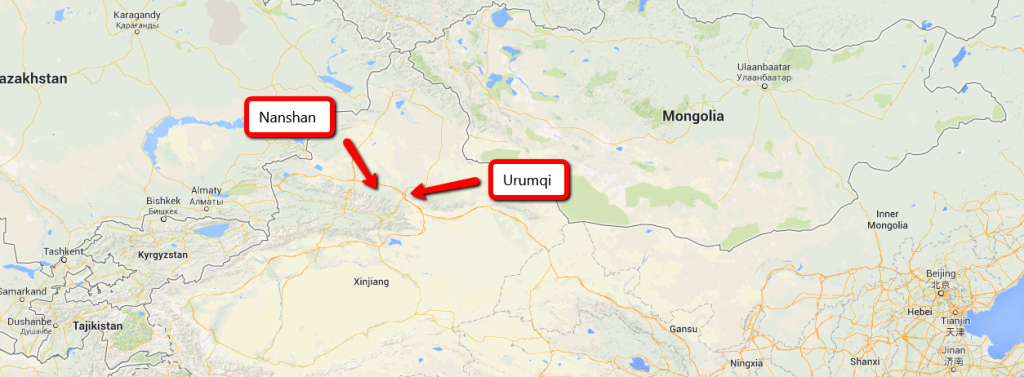
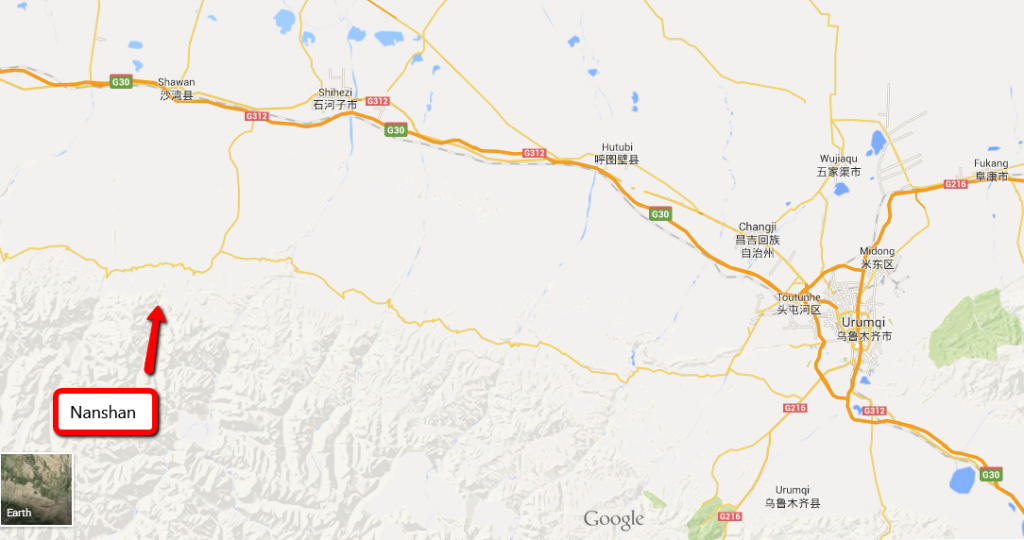
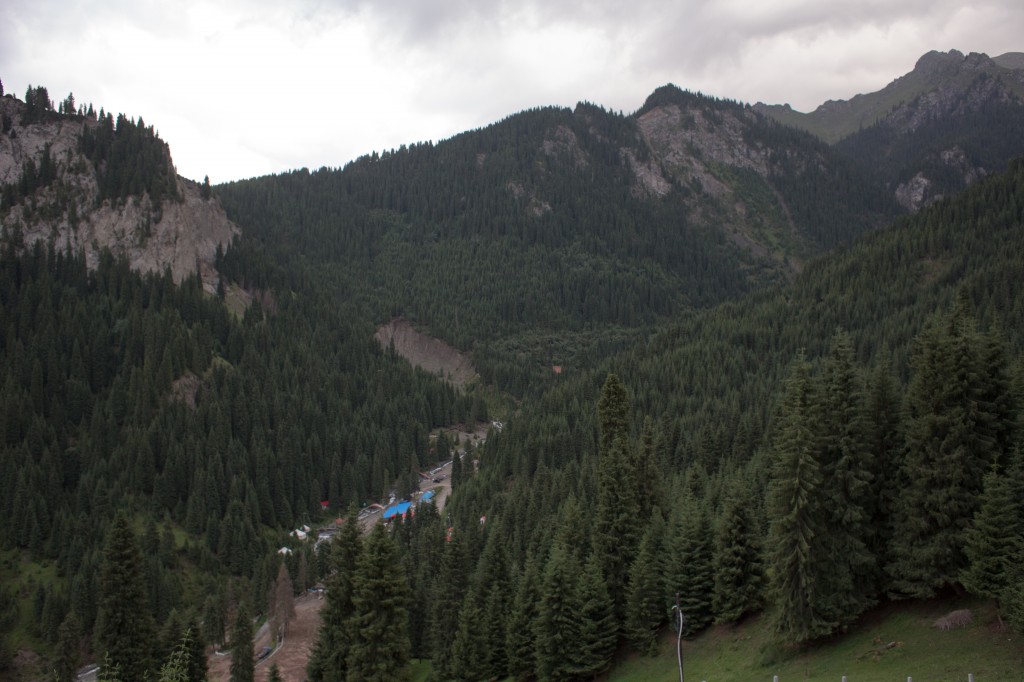
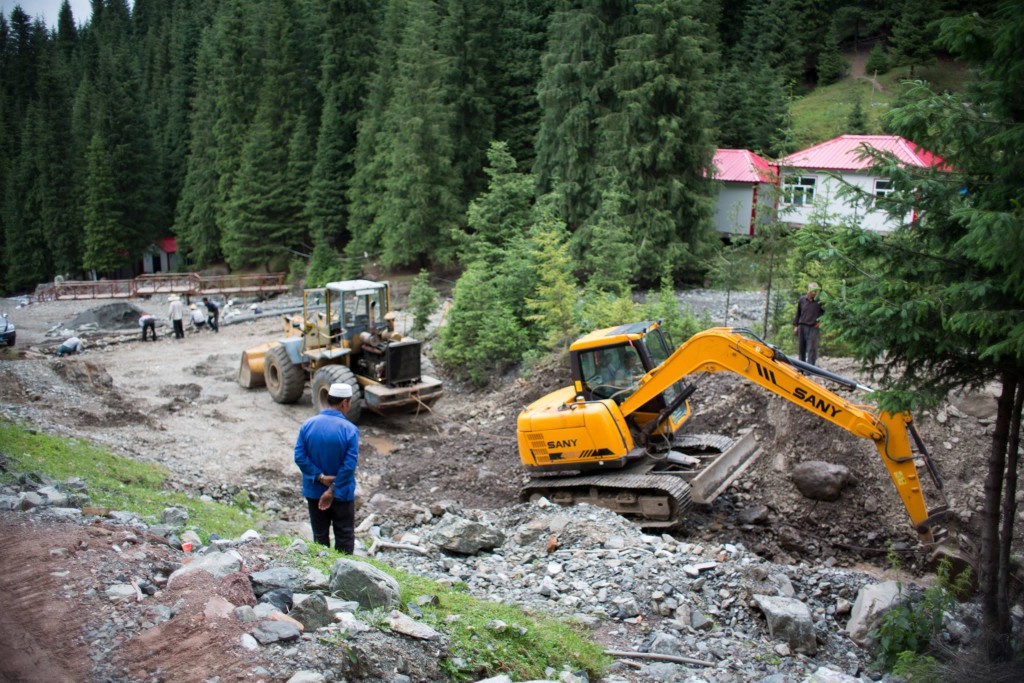
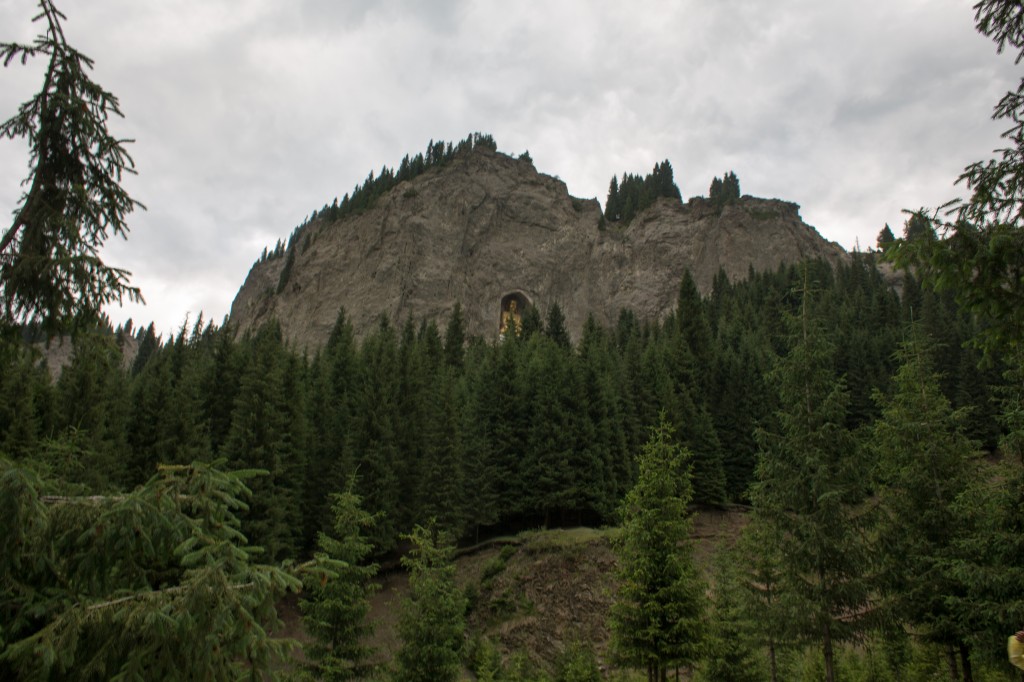
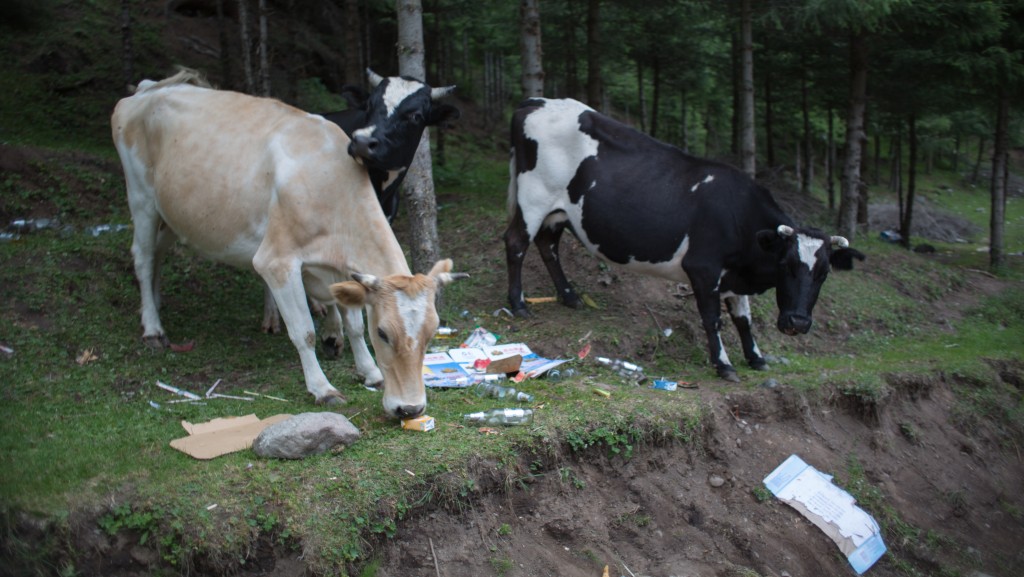
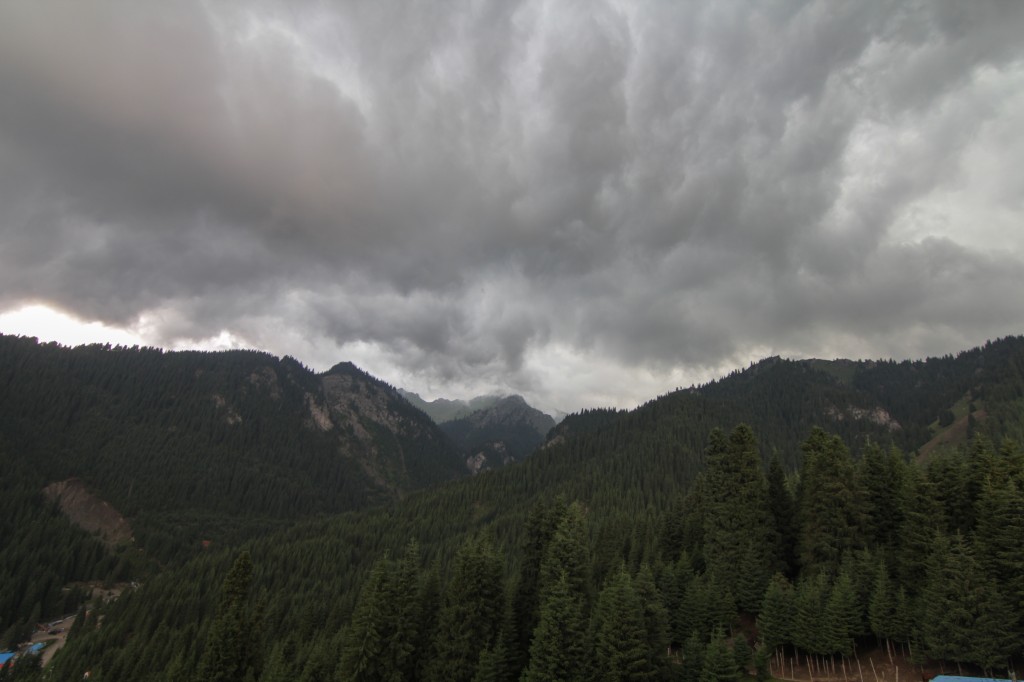
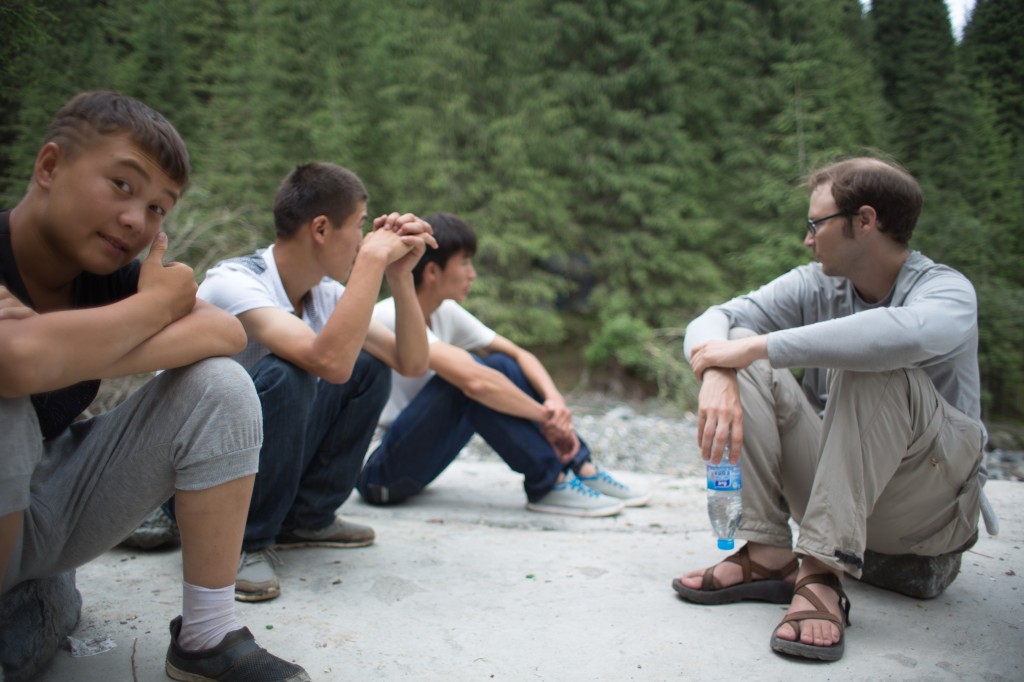
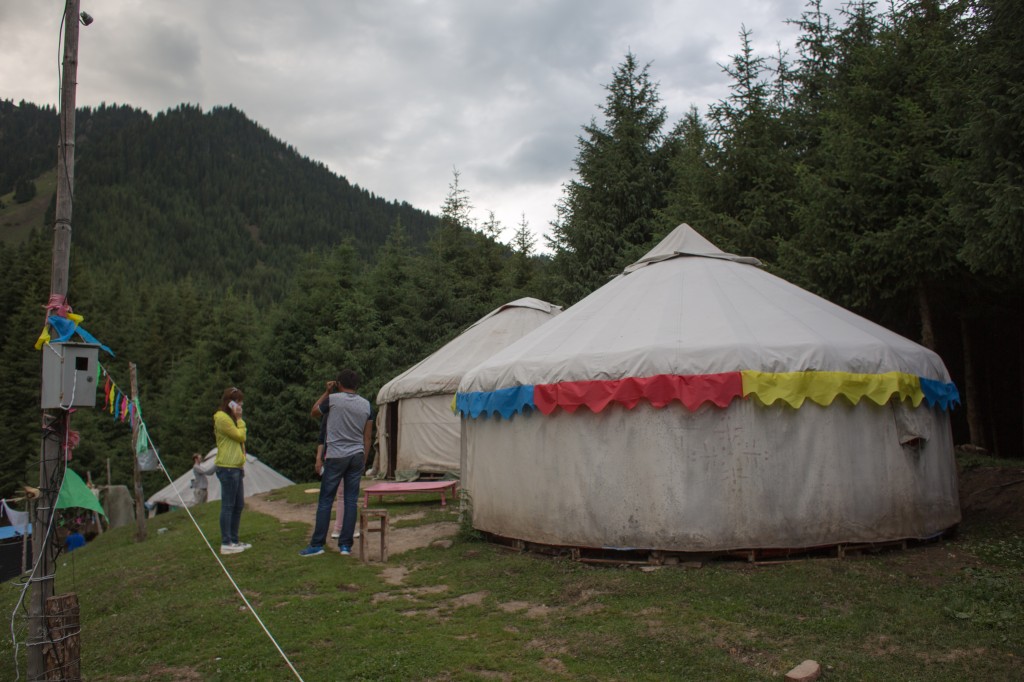
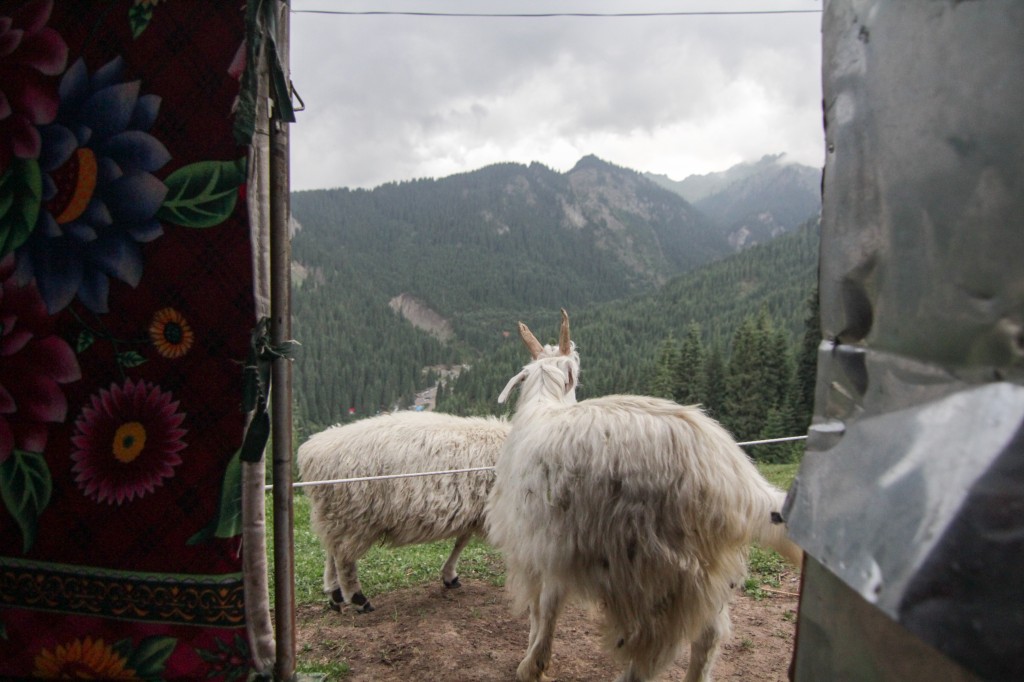
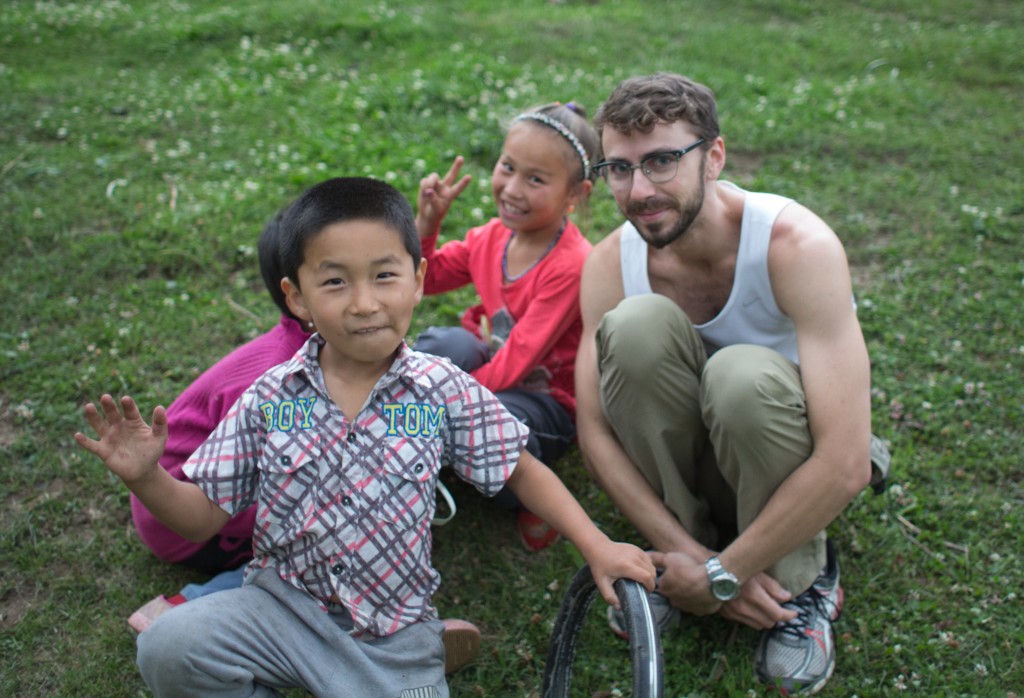
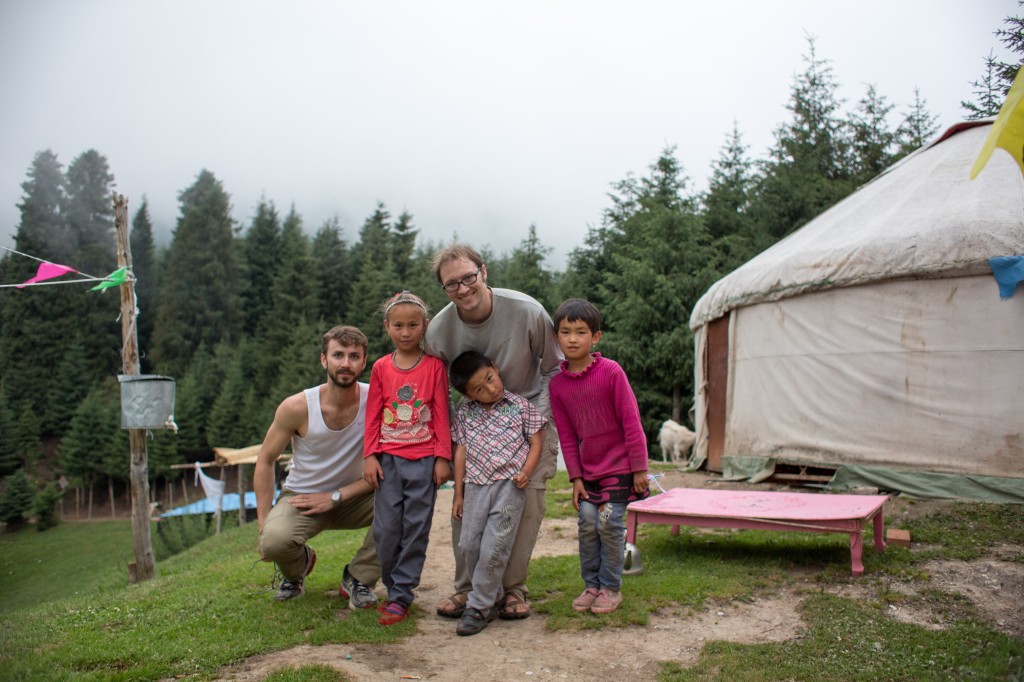
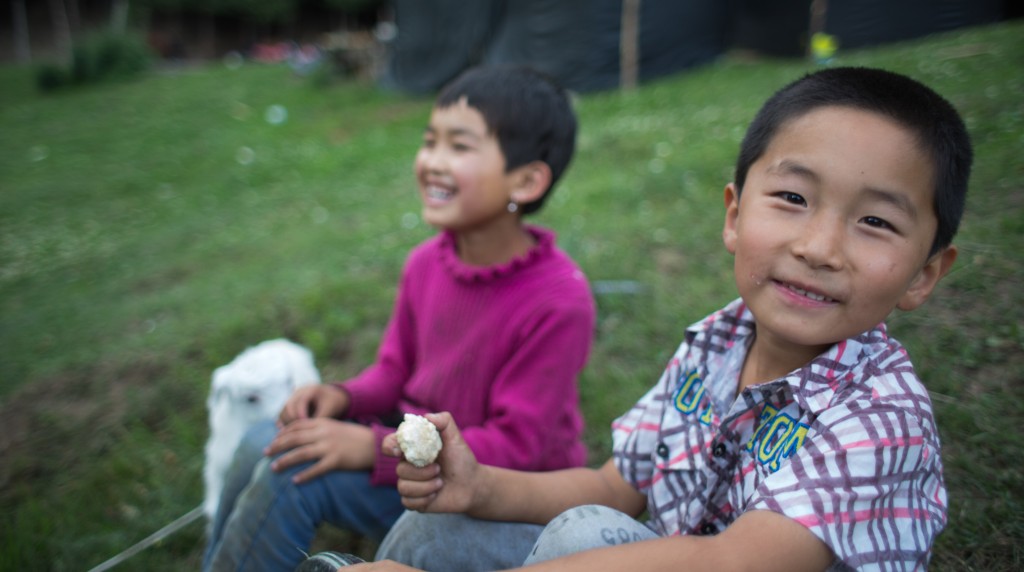
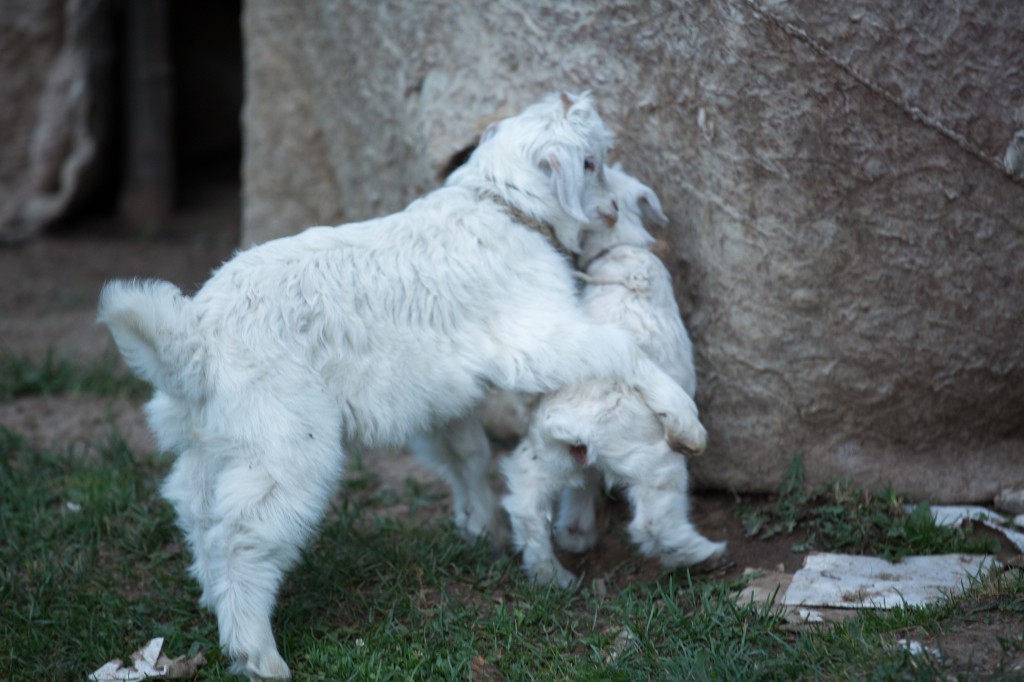
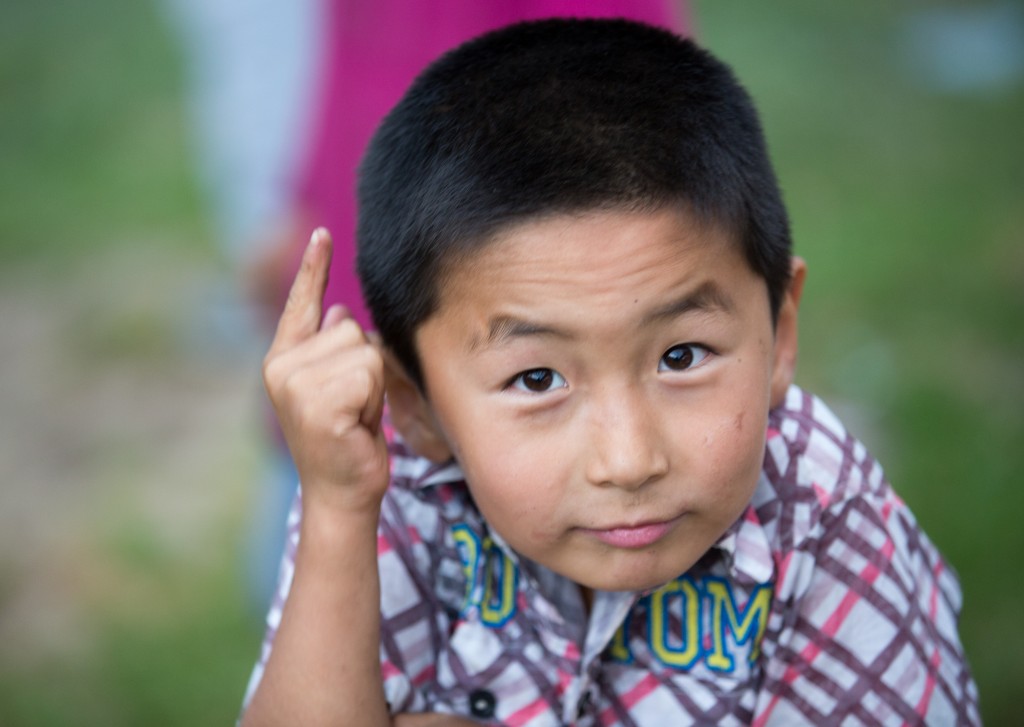
Many thx for including a map of yr travels! Are you still speaking Mandarin in this area? Tom
No Problem. Xinjiang is tough, linguistically. Han Chinese speak a pretty standard version of Mandarin in these areas, so that is not a problem, but a lot o fUighurs speak little to no Chinese, so I went back to the international language, gesticulation.